· 10 min read
Cognitive Biases in Hiring: Part 1
Cognitive biases can arise due to past emotions, heuristics, global societal views, our attention spans, or even the order in which information is framed and presented.
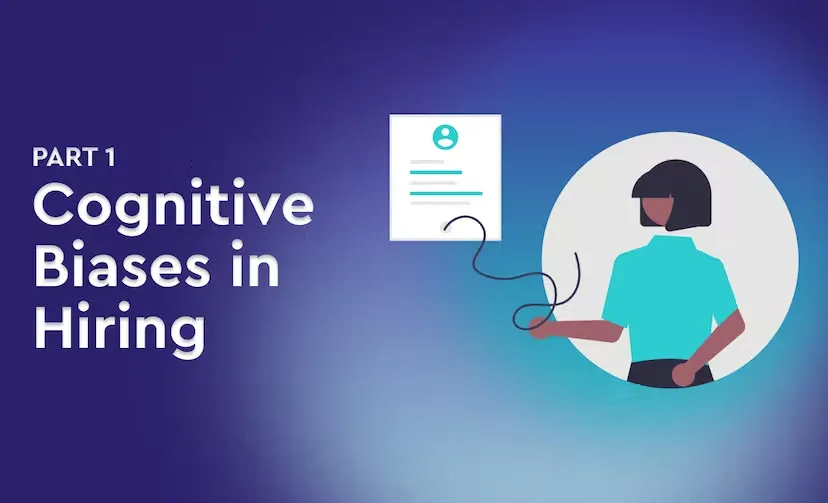
· 10 min read
Cognitive biases can arise due to past emotions, heuristics, global societal views, our attention spans, or even the order in which information is framed and presented.

Have you ever judged a book by its cover?
If you’re honest with yourself, you probably have. That’s because we all have biases 一 whether we acknowledge them or not.
While basing book purchasing decisions on a biased point of view may not be that harmful, our inherent biases can have detrimental effects on other decisions, particularly in the hiring process.
In the competitive hiring climate we’re in, hiring teams are trying to move as fast as possible to get and keep a good hire who is a culture fit. While that’s a good thing, it also dramatically increases the potential for cognitive biases to creep in without you or your team realizing it.
So in this series, we hope to explain what cognitive bias is, share where several common forms of cognitive bias show up in the hiring process, and offer tips on how to address them head-on.
A cognitive bias is an unconscious inclination towards particular ideas, groups, people, or things.
Biased Hiring can arise due to past emotions, heuristics, global societal views, our attention spans, or even the order in which information is framed and presented. These biases can be dangerous because they influence the objectivity, accuracy, and rationality of our first impressions, which, in turn, drive our behavior.
As you might imagine, cognitive biases can have a marked effect on the hiring process 一 a system that typically relies very heavily on first impressions.
To reduce the impact of potential biases in the workplace and make a good hire, you need to understand which cognitive biases are most prevalent and then take steps to lessen their impact.
Because everyone has cognitive biases, and they significantly affect the way we interpret the world around us, it’s crucial to identify and mitigate them in your organization. Below, we’ll discuss a few biases to be conscious of during candidate screens and interviews and provide several methods of overcoming them.
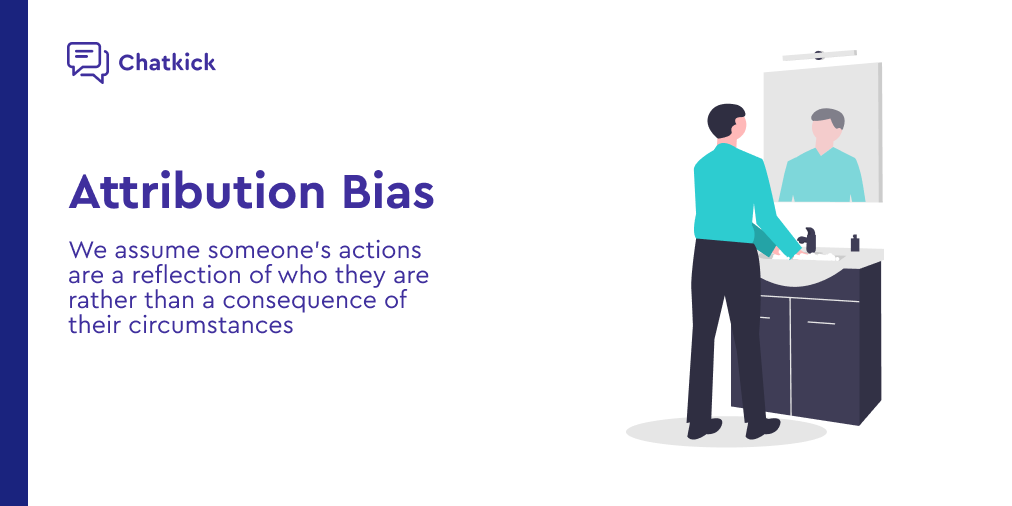
Attribution bias occurs when we assume that someone’s achievements result from who they are rather than a consequence of their circumstances.
For example, let’s say you see a toddler at the top of a very difficult hike. At first glance, you might assume that he was an exceptionally strong, brave little kid who made his way up the mountain all by himself.
But then, you turn around and see one of his parents wearing a baby carrier, and you realize that he most likely had some assistance along the way.
Without knowing exactly how someone got to where they are today, it’s easy for resumes and interviews to become inflated during the hiring process.
Interviewers might assume that a candidate’s successes are due to an inherent personal trait without gathering more context around those accomplishments. Even if those successes are legitimate, they may not always be transferable to a new environment.
Attribution bias can also work in reverse.
For instance, a candidate may apply to an open role at your company without what seems like ample or desirable experience for that position. Without some extra probing, interviewers or screeners may unfairly presume that the candidate won’t be able to learn what they need to or be able to hit the ground running quickly.
Attribution bias can cause interviewers to put too much or not enough emphasis on someone’s past performance. To get around that, we recommend:
Training your interviewers to ask better questions. When interviewers aren’t coming into a conversation knowing what they want to talk about, they are more likely to go off their gut feelings or other extraneous factors. Having a pre-populated list of interview questions that get to the root of a person’s work style and skills can take a conversation deeper and make the candidate’s answers more realistic and reflective of their actual expertise.
Add more interviewers to the process. Having a varied set of interviewers averages out extremely high or extremely low feedback scores, which could be ascribed to attribution bias.
Review your interviewers’ skills regularly. Using a tool like Chatkick to record your interviews can uncover some interviewers’ tendency to take candidates’ answers at face value. Studying interviewers’ tapes can reveal examples of where they could’ve pressed for more information can make them better interviewers and decrease the risk of attribution bias.
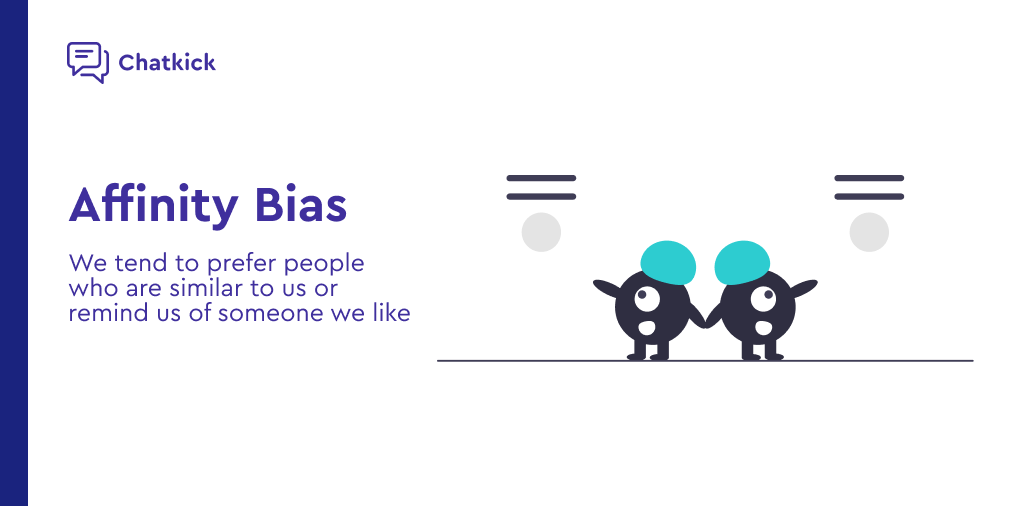
Affinity bias, also known as “egocentric bias,” is our tendency to prefer people who are similar to us or remind us of someone we like. In other words, we value our own characteristics more than those of others.
Sounds selfish, right? While it’s relatively easy to recognize this kind of bias in others, it’s much harder to identify it in ourselves. Affinity bias can be as subtle as gravitating towards certain people at a happy hour because they wore similar clothing or walking up to a particular booth at a career fair because the people behind it look like you.
While affinity bias isn’t necessarily bad, it can become discriminatory, especially in a hiring setting.
Interviewers may subconsciously favor people who went to the same school, are of the same gender, grew up in the same area, etc.
And if you already have a relatively homogenous group of interviewers, their affinity bias may cause your company to pick candidates who maintain the status quo instead of challenging it. Minorities on your interview panels may also be afraid to voice valid concerns or red flags about candidates for fear of being ostracized.
Egocentric bias can unintentionally create an unfavorably uniform employee base. You can avoid this by:
Getting more diverse candidates in the pipeline. Attracting a wide range of candidates in terms of background, skillset, and experience can go a long way towards constraining affinity bias. The less your candidates have in common with their interviewers the better 一 everyone can learn and grow from new, different perspectives.
Doing blind resume screens. Not knowing where a candidate is from, their age, gender, or where they went to school can force your screeners and interviewers to look at each candidate more objectively, focusing on the concrete skills and experience they could bring.****
Collect feedback independently. Some people may be hesitant to reveal their true feelings to a big group of people 一 particularly when they have an opposing point of view. Using a tool like Chatkick allows each interviewer to submit their candidate feedback straight to HR without listening to or being pressured by others’ opinions.
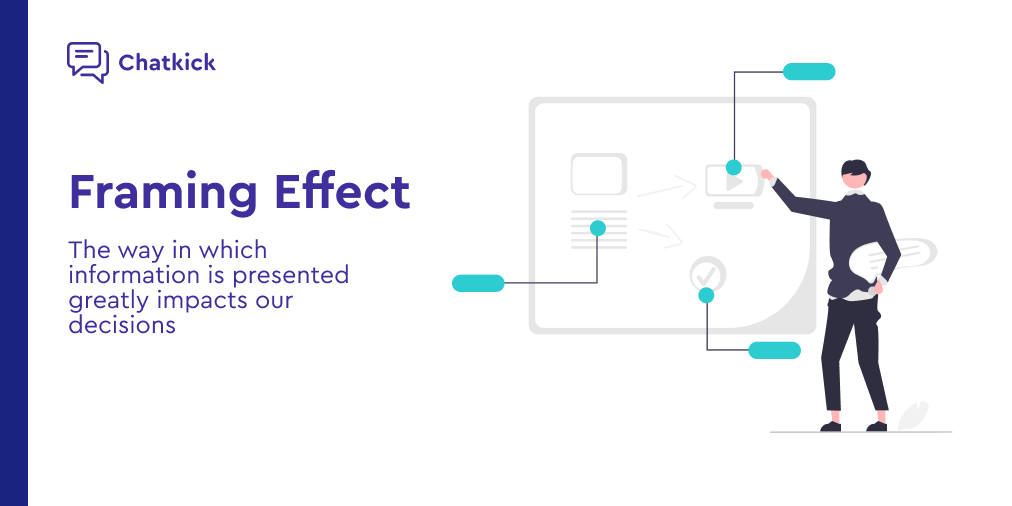
The framing effect refers to our bias as a result of how information is presented. If someone spins an event in a positive light, we usually think more positively about it, and vice versa 一 even if the content is exactly the same.
Famed psychologists, Daniel Kahneman and Amos Tversky, explain framing in the context of “prospect theory,” in which we perceive a loss as more significant and avoid it more than an equivalent gain. Because we have this strong urge to dodge sure losses as much as possible, we favor options with certain gain.
An example of the framing effect at work was a cancer treatment preference study conducted in 1989. One group of participants consisted of healthy volunteers and the other of cancer patients.
In the experiment, both groups were asked to pick a cancer treatment option: one that was “toxic” or one that was “non-toxic”, but less effective. Scientists framed these two options in three ways: the probability of dying (a negative frame), the probability of living (a positive frame), and the probability of living and dying (a mixed frame).
When framed negatively as a probability of dying, participants were less likely to choose the toxic treatment, even though it was more effective.
There are two other heuristics that cause us to overvalue how something is said and undervalue what is being said: availability and affect heuristics.

When making a decision, we favor shortcuts 一information that comes to mind easily and quickly when making a decision. In terms of framing, this means we’ll be more likely to make a split-second decision based on the way we remember someone presenting something, rather than the actual information.
When making decisions, we also rely on our feelings. When something is presented with more or less emotion, we tend to recall that emotion and act on that instead of the facts.
As you can imagine, the framing effect can have severe consequences on the hiring process.
An interviewer’s impression may depend on how eloquent a candidate is, rather than the work they did, particularly if the projects they’ve worked on are out of their depth.
Moreover, interviewers might react emotionally to something a candidate said, which can cause huge variance in interview feedback forms.
The framing effect is tricky to overpower, but here are some things you can do to suppress it:
Make a habit of rewatching interviews. Solutions like Chatkick enable interviewers to learn from succumbing to the framing effect so that they can be more attentive listeners next time.
Ask follow-up questions. Even good hires may not know the best way to present themselves in a way that’s immediately convincing, causing interviewers to discount them too soon. So make sure your interviewers are trained to ask a series of questions to get to the root of the candidate’s answer instead of jumping to conclusions.
Leverage indirect team members. Direct team members may be more likely to have an emotional reaction to someone new joining their team. So consider adding employees from other teams who are less involved to balance out your interview panel.
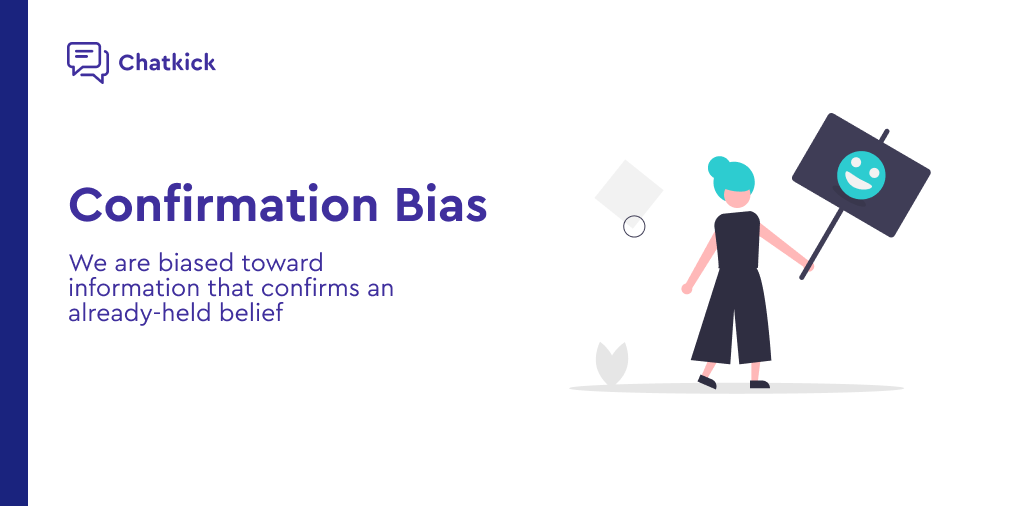
Confirmation bias, also known as “anchoring”, occurs because we are biased toward information that confirms one of our already-held beliefs. Confirmation bias impacts how we gather, interpret, and remember information.
A classic example of confirmation bias happens during an election season. People subconsciously seek out information that paints their favorite candidates in the best light while ignoring information to the contrary.
In the end, they aren’t making a fully informed decision since they are relying heavily (anchoring) on the information that corroborates their beliefs.
Where it presents in the hiring process
Interviewers tend to anchor on early impressions and seek confirmation as opposed to learning about the candidate throughout the interview.
Forming a strong opinion at the beginning of an interview can be disadvantageous. Candidates may say or do something in the last half of an interview that could totally change the interviewer’s mind, positive or negative. But if the interviewer has already anchored on their original impressions, it won’t matter.
Being close-minded can cause you and your team to neglect potentially good hires that had a not-so-good first impression. By the same token, confirmation bias can cause teams to overlook major red flags in extra charming candidates.
Just like all biases, confirmation bias is tough to circumvent in the hiring process, but these methods help interviewers stay more objective:
Encourage a “hold and reset” mindset. When you’re educating interviewers, challenge them to recognize themselves judging a candidate before he or she has spoken and put themselves back to neutral (holding their judgment). Resetting at that point stops interviewers from confirming what they think they already know.
Observe note-taking. In a video platform like Chatkick, you can track when interviewers take notes or answer survey questions. Condition interviewers to wait to jot down their notes or submit their survey responses until after a full answer is given.
Unfortunately, there’s really no way to completely eliminate cognitive biases from the hiring process.
But that doesn’t mean you can’t try to limit their effects. Helping your team understand their potential for forming attribution, affinity, framing, confirmation biases, and teaching them how to overcome them will only improve your company’s overall decision-making process and ensure you make a good hire.
But you’re not off the hook yet! There are several more biases that show up in the hiring process that your organization should be aware of. Read our Cognitive Bias in Hiring Part 2 post to learn more. And if you’re interested in how Chatkick can help you conquer biases in your workplace, request access to the tool today.